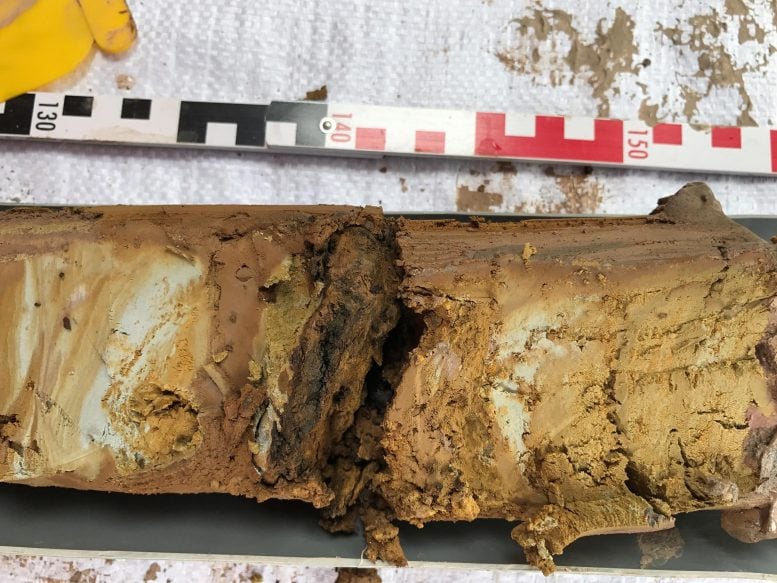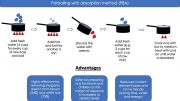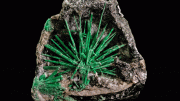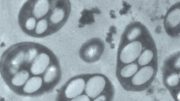
A sediment core sample from an aquifer in Vietnam shows orange, arsenic-bearing iron oxides and black NOM. Credit: Andreas Kappler
Millions of people worldwide consume water contaminated with levels of arsenic that exceed those recommended by the World Health Organization. This could cause health problems, such as arsenic poisoning, cardiovascular disease, and cancer. Microbes in groundwater release arsenic from sediments, and organic matter helps fuel this reaction. Now, researchers reporting in ACS’ Environmental Science & Technology have discovered that the type of natural organic matter (NOM) influences the rate and level of arsenic release.
Arsenic occurs naturally in the minerals that make up aquifer sediments. Some species of bacteria can dissolve arsenic- and iron-containing minerals, releasing arsenic into the water. Scientists have tried to simulate this process in the lab by using simple carbon sources, such as acetate and lactate, as food for arsenic-freeing bacteria. However, NOM in groundwater contains more complex carbon sources, such as plant-derived organic matter, amino acids, and carbohydrates. Andreas Kappler and colleagues wanted to study how NOM from actual aquifer sediments near the village of Van Phuc, Vietnam (where groundwater is contaminated with high levels of arsenic), influenced arsenic release.
In the field, the team collected sediment samples from the aquifer as far down as 150 feet (45 meters) below ground level. They found more total NOM, and more complex molecules within that NOM, from upper clayey silt layers than from lower sandy sediments. Back in the lab, the researchers placed arsenic-containing minerals and simulated groundwater in test tubes. Then, they added acetate/lactate or NOM from the two layers. At first, they found that acetate/lactate caused bacteria in the sediments to release more arsenic than when they added NOM from the clayey silt or sandy layers. However, after 100 days, the tubes with NOM from the two aquifer layers contained more dissolved arsenic, as well as more diverse microbial communities, than those containing lactate/acetate. Although NOM from the aquifer caused bacteria to release arsenic more slowly than the simple carbon sources, over time it could help free the same amount of or even more arsenic, the researchers say.
Reference: “Role of in Situ Natural Organic Matter in Mobilizing As during Microbial Reduction of FeIII-Mineral-Bearing Aquifer Sediments from Hanoi (Vietnam)” by M. Glodowska, E. Stopelli, M. Schneider, A. Lightfoot, B. Rathi, D. Straub, M. Patzner, V. T. Duyen, AdvectAs Team Members, M. Berg, S. Kleindienst and A. Kappler, 11 March 2020, Environmental Science & Technology.
DOI: 10.1021/acs.est.9b07183
The authors acknowledge funding from the Deutsche Forschungsgemeinschaft, the Institutional Strategy of the University of Tübingen, the Collaborative Research Center CAMPOS and an Emmy Noether Programme.









Be the first to comment on "Arsenic Contamination in Groundwater Influenced by Natural Organic Matter"